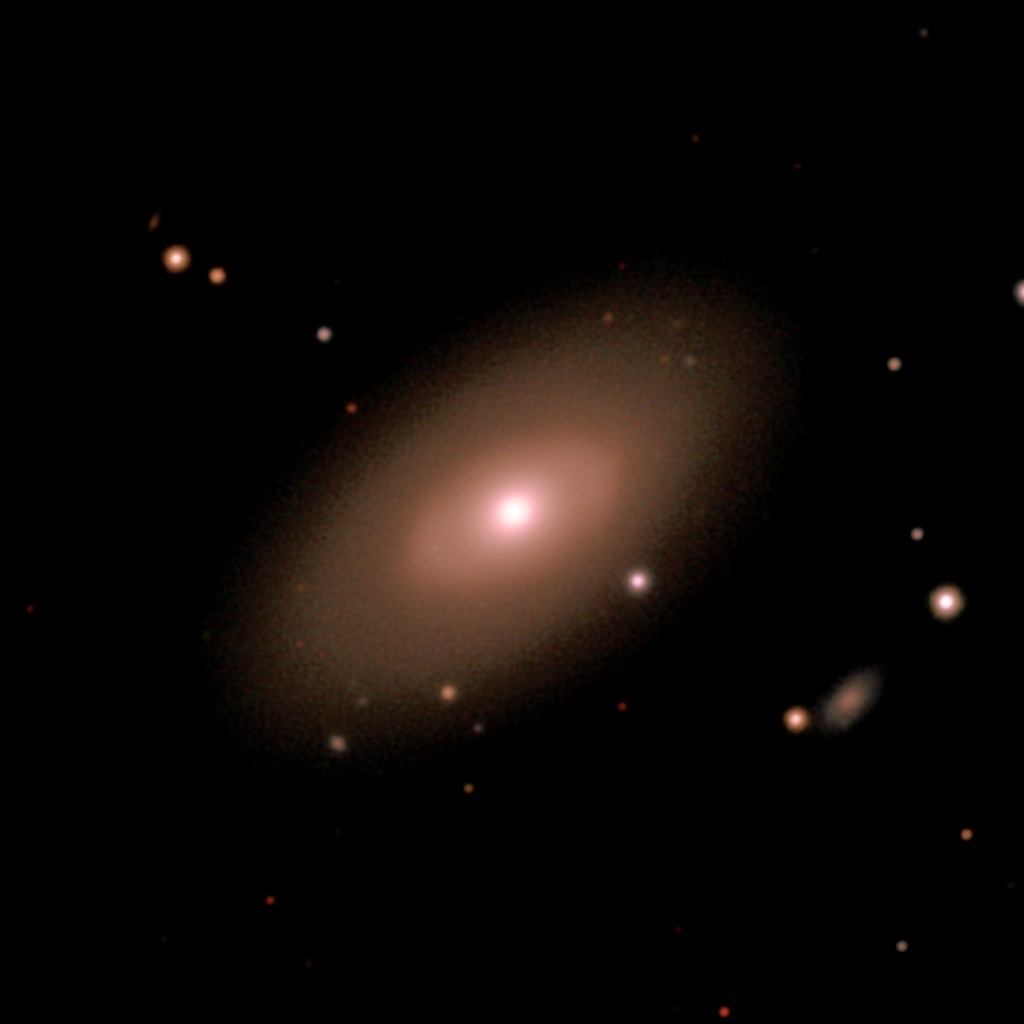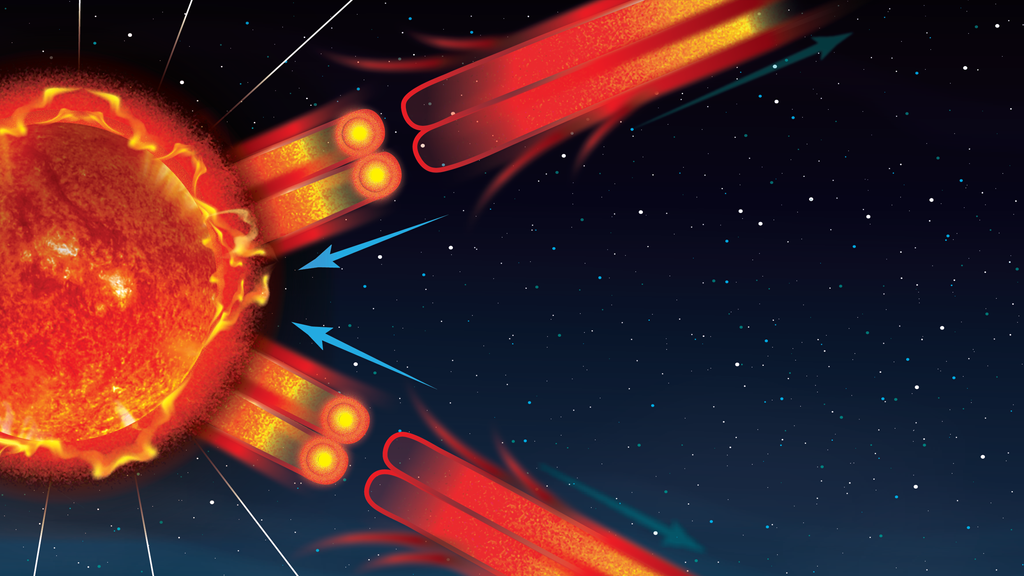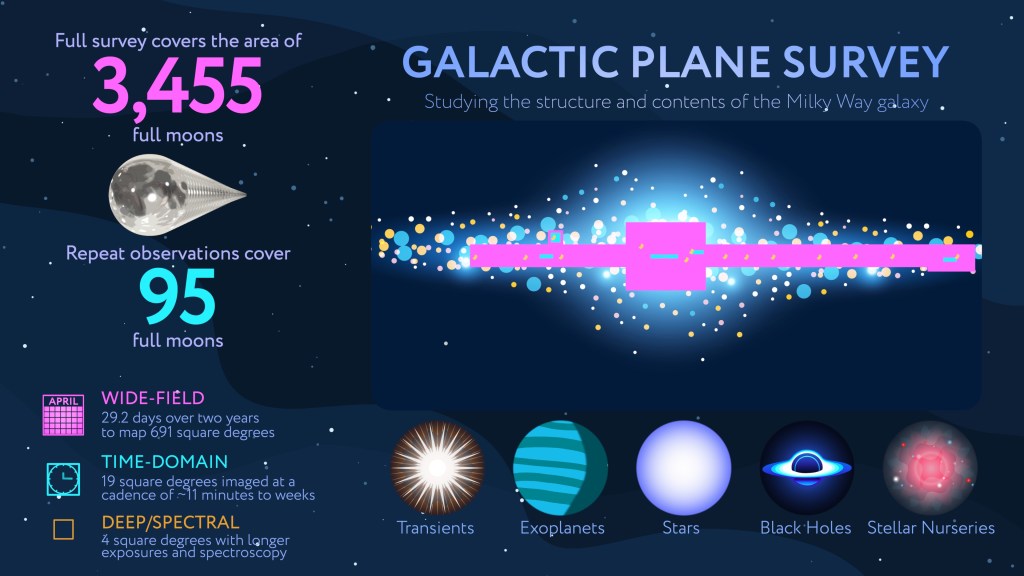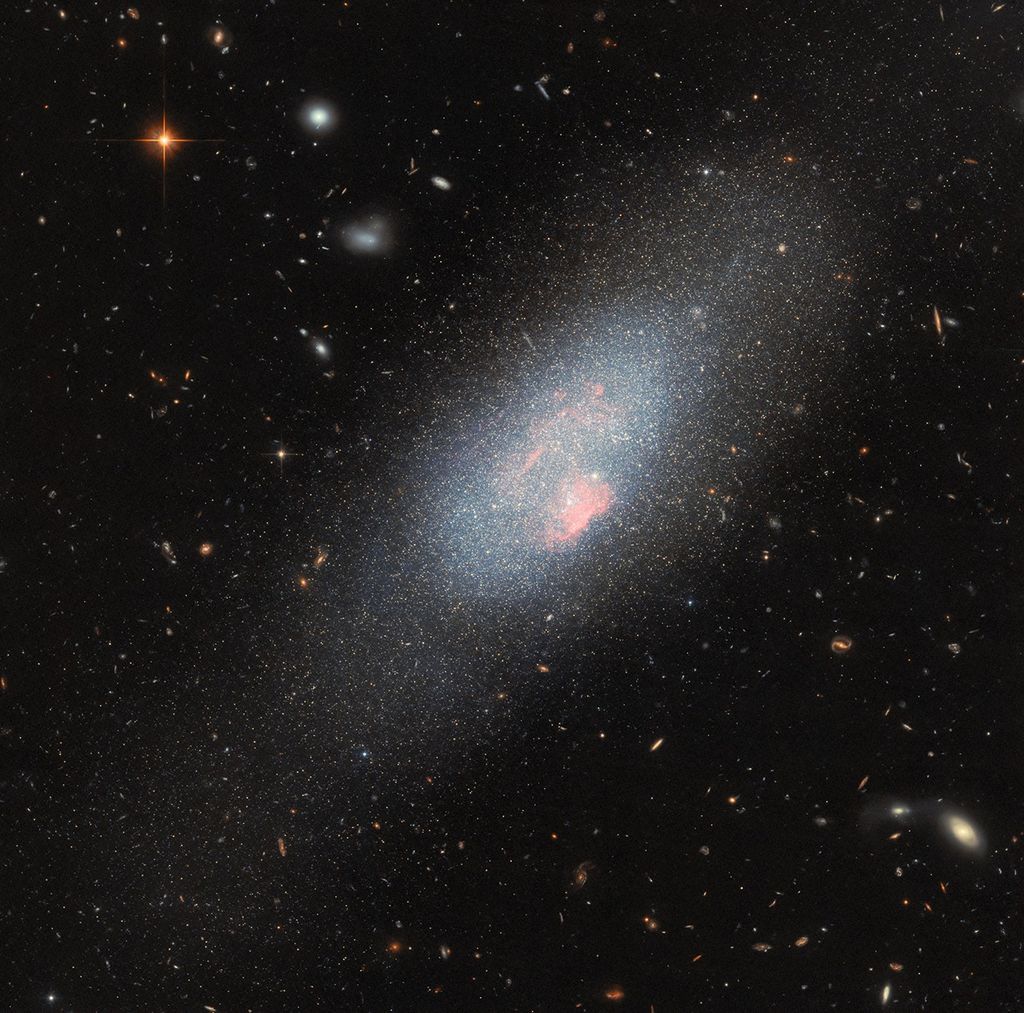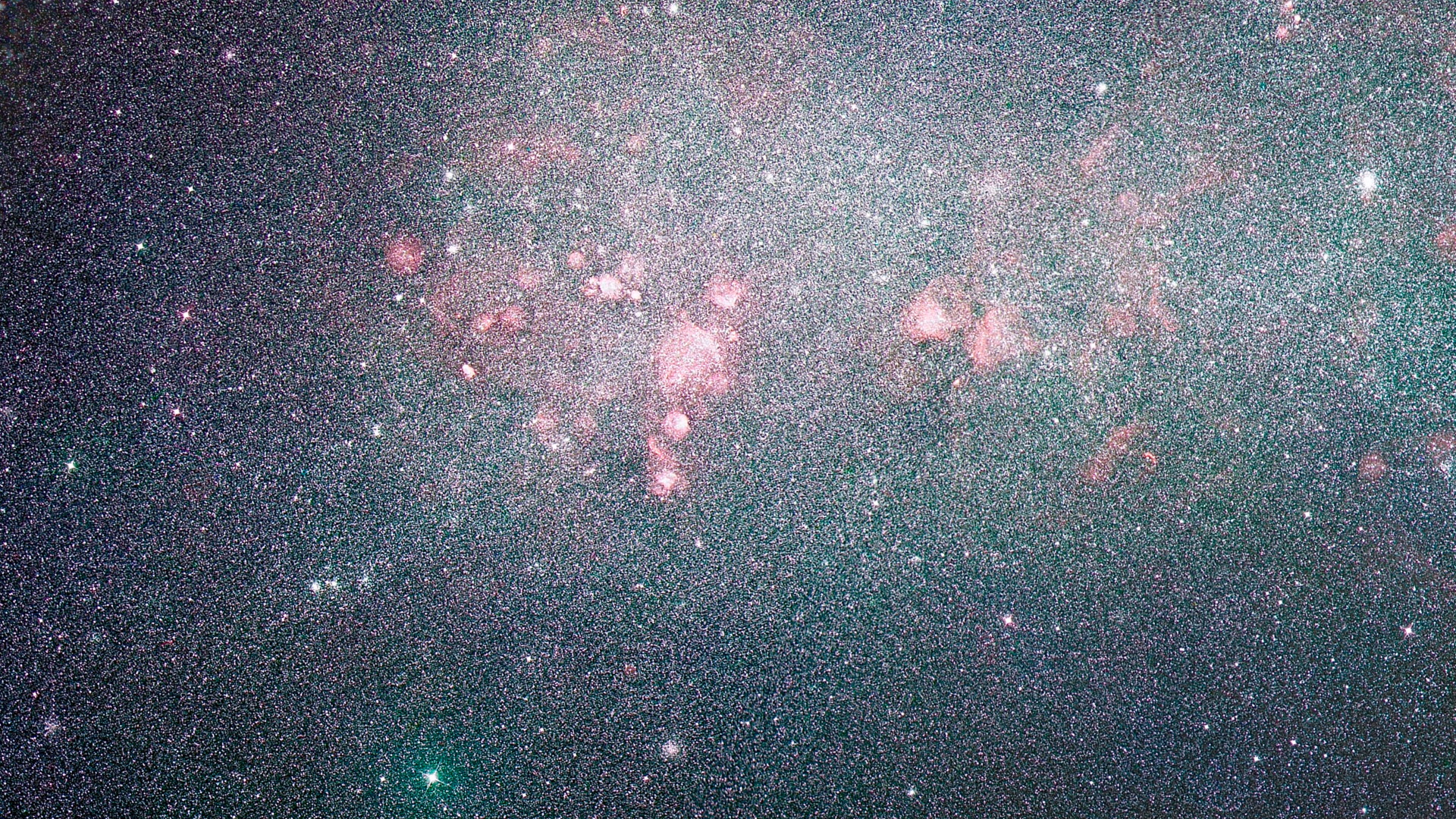1 min read
Scale and Compass for NGC 248
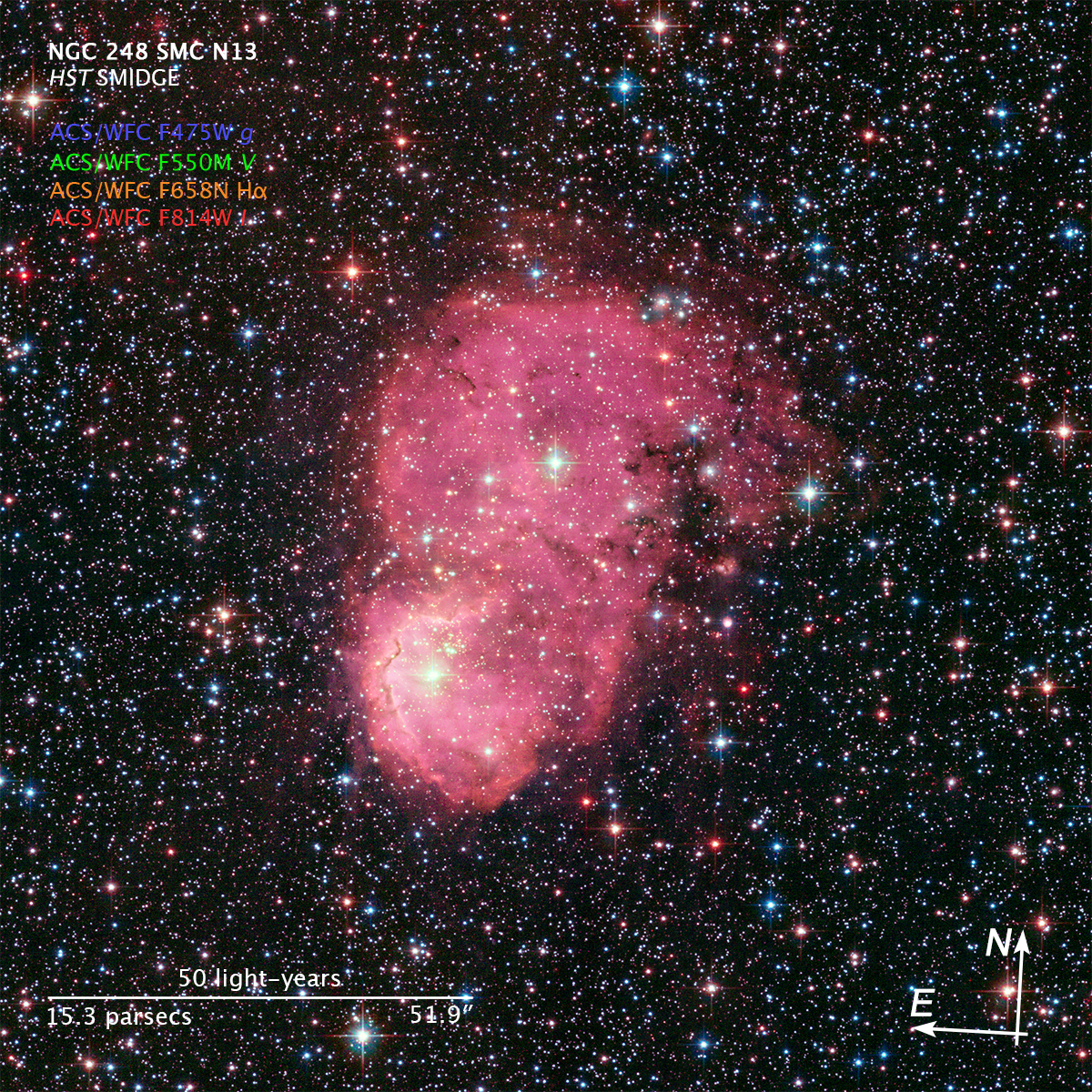
About the Object
- R.A. PositionR.A. PositionRight ascension – analogous to longitude – is one component of an object's position.00h 45m 24.07s
- Dec. PositionDec. PositionDeclination – analogous to latitude – is one component of an object's position.-73° 22' 44.40"
- ConstellationConstellationOne of 88 recognized regions of the celestial sphere in which the object appears.Tucana
- DistanceDistanceThe physical distance from Earth to the astronomical object. Distances within our solar system are usually measured in Astronomical Units (AU). Distances between stars are usually measured in light-years. Interstellar distances can also be measured in parsecs.197,000 light-years (61 kiloparsecs)
About the Data
- Data DescriptionData DescriptionProposal: A description of the observations, their scientific justification, and the links to the data available in the science archive.
Science Team: The astronomers who planned the observations and analyzed the data. "PI" refers to the Principal Investigator.These datasets are from the HST proposal 13659, P.I.: K. Sandstrom (University of California, San Diego). - InstrumentInstrumentThe science instrument used to produce the data.HST>ACS/WFC
- Exposure DatesExposure DatesThe date(s) that the telescope made its observations and the total exposure time.September 2015
- FiltersFiltersThe camera filters that were used in the science observations.F475W (B), F550M (narrow V), F658N (H-alpha), and F814W (i)
- Object NameObject NameA name or catalog number that astronomers use to identify an astronomical object.NGC 248, DEM S 16, SMC N13
- Object DescriptionObject DescriptionThe type of astronomical object.Star-forming Nebula
- Release DateDecember 20, 2016
- Science ReleaseFestive Nebulas Light Up Milky Way Galaxy Satellite
- Credit

This image is combined from separate exposures acquired by HST's ACS/WFC instrument. Four filters were used to sample different wavelength bands. The color results from assigning different hues (colors) to each monochromatic (grayscale) image associated with an individual filter. In this case, the assigned colors are: Blue: F475W (B) Green: F550M (narrow V) Orange: F658N (H-alpha) Red: F814W (i)
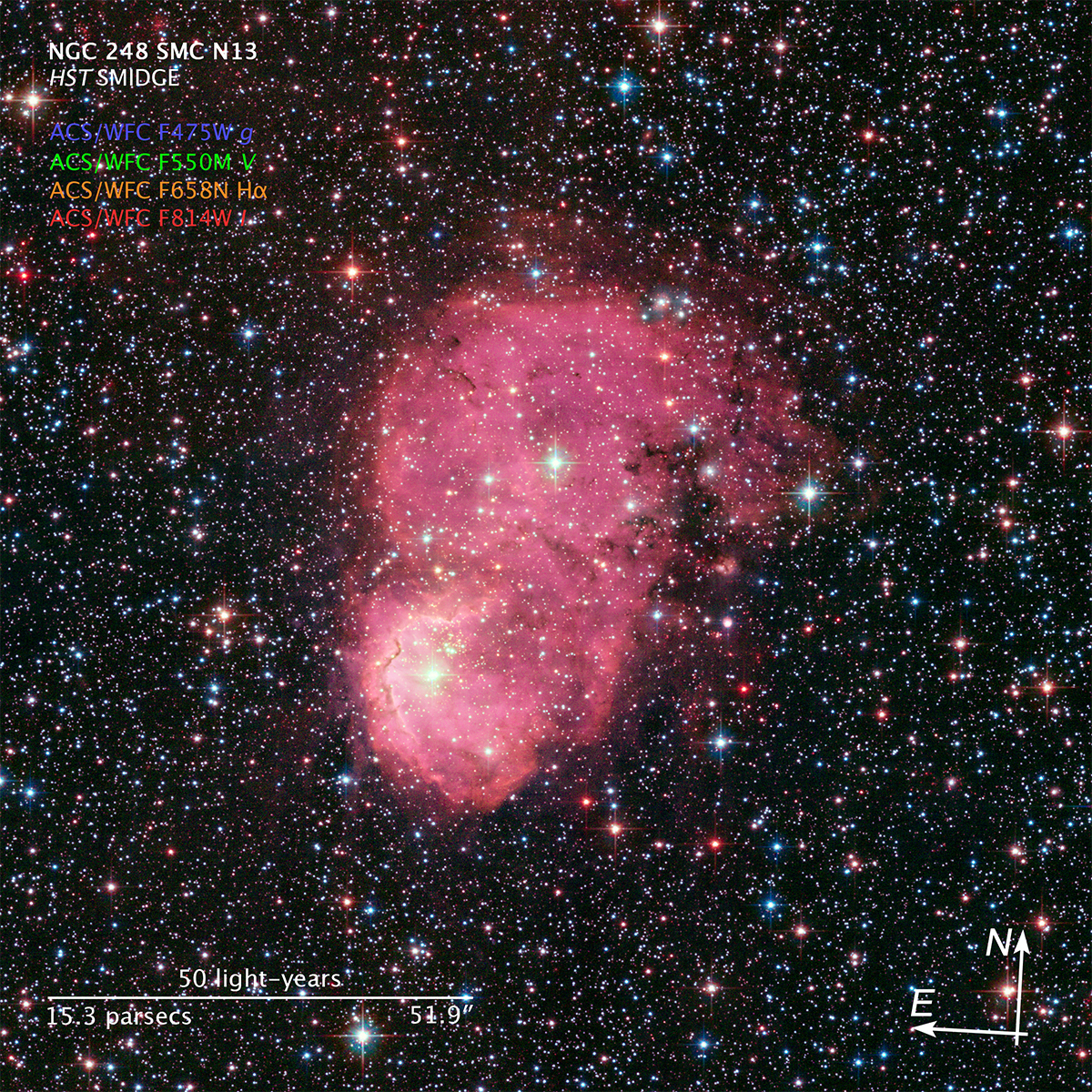
Related Images & Videos

NGC 248 in the Small Magellanic Cloud
NASA's Hubble Space Telescope captured two festive-looking nebulas, situated so as to appear as one. They reside in the Small Magellanic Cloud, a dwarf galaxy that is a satellite of our Milky Way galaxy. Intense radiation from the brilliant central stars is heating hydrogen in...
Share
Details
Claire Andreoli
NASA’s Goddard Space Flight Center
Greenbelt, Maryland
claire.andreoli@nasa.gov


